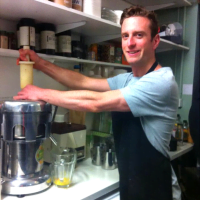Pie making is an art that brings joy and satisfaction to both the baker and those who indulge in the delicious final product. However, not everyone owns a food processor, which is often a recommended tool for preparing pie crusts. But fear not, in this article, we will explore various methods to make a perfect pie crust without a food processor. Whether you prefer a flaky crust for a fruit pie or a buttery crust for a savory dish, we’ve got you covered!
How to Make Pie Crust Without a Food Processor
1. Classic Hand-Kneading Method
In this traditional method, all you need is a mixing bowl and a pastry cutter or two forks.
Start by combining your dry ingredients in the bowl: all-purpose flour, a pinch of salt, and a touch of sugar. Cut cold butter into small cubes and add it to the flour mixture. Use the pastry cutter or forks to blend the butter into the flour until you get a crumbly texture.
Next, add ice-cold water a little at a time and gently mix until the dough comes together. Form it into a ball, wrap it in plastic wrap, and refrigerate for at least 30 minutes before rolling it out.
2. Grating Butter Method
If you have a block of cold butter and a cheese grater, this method is perfect for you. It helps to distribute the butter evenly in the dough.
Start by freezing the butter for about 15-20 minutes. Then, grate the frozen butter directly into the flour mixture. Gently toss the grated butter with the flour using your hands until it resembles coarse crumbs.
Slowly add cold water and mix until the dough comes together. Shape the dough into a disk, wrap it in plastic wrap, and refrigerate before rolling out.
3. Using a Stand Mixer
If you have a stand mixer with a paddle attachment, making pie crust becomes a breeze.
Place the dry ingredients in the mixer bowl and add cold, cubed butter. Mix on low speed until the butter is broken down into pea-sized pieces. Gradually add cold water while the mixer is running until the dough forms.
Wrap the dough in plastic wrap and refrigerate it for a while before rolling.
4. Oil-Based Pie Crust
For those looking for a vegan or cholesterol-free alternative, an oil-based pie crust is an excellent option.
In a bowl, combine all-purpose flour, salt, and a small amount of sugar (optional). Then, add your choice of oil (like vegetable oil or coconut oil) and mix until the dough sticks together.
Press the dough into the pie dish and refrigerate before filling and baking.
5. Puff Pastry Method
If you desire a flaky and buttery crust, the puff pastry method is ideal.
Take store-bought puff pastry and let it thaw according to the package instructions. Roll it out to the desired size and shape, then use it as your pie crust.
6. Whole-Wheat Pie Crust
For a healthier option, consider using whole-wheat flour instead of all-purpose flour.
Combine whole-wheat flour, a pinch of salt, and a touch of sweetener in a bowl. Add cold butter and mix until crumbly. Gradually add cold water, mix, and refrigerate before rolling.
7. Almond Flour Crust
If you’re looking for a gluten-free alternative, almond flour works wonders.
Mix almond flour, melted butter, and a sweetener of your choice. Press the mixture into the pie dish, and you’re ready to go.
Common FAQs About Making Pie Crust Without a Food Processor
Can I substitute oil for butter in a pie crust?
Yes, you can substitute oil for butter in a pie crust. Use a neutral-flavored oil like vegetable oil or a healthier option like coconut oil. Keep in mind that the texture and taste may differ slightly from a butter-based crust.
How do I prevent my pie crust from becoming soggy?
To prevent a soggy crust, blind bake it before adding the filling. Line the crust with parchment paper or aluminum foil and fill it with pie weights or dry beans. Bake for a few minutes before proceeding with your pie recipe.
Can I freeze homemade pie dough?
Absolutely! Homemade pie dough freezes well for up to 3 months. Wrap it tightly in plastic wrap or aluminum foil before placing it in the freezer. Thaw it in the refrigerator overnight before using it.
Can I use margarine instead of butter?
Margarine can be used as a butter substitute, but keep in mind that the taste and texture may differ. Look for margarine with a high fat content to achieve a better result.
Can I make a pie crust in advance?
Yes, you can prepare the dough in advance and refrigerate it for up to three days. Alternatively, you can freeze it for longer storage.
How do I get a golden-brown crust on my pie?
To achieve a golden-brown crust, brush the top of the pie with an egg wash (a beaten egg with a splash of water or milk) before baking. This will give your pie a beautiful shine and color.
Conclusion
Making a delicious pie crust without a food processor is not only possible but also opens up a world of creativity and flavor combinations. With the methods outlined in this article, you can create flaky, buttery, or even healthy pie crusts to complement your favorite fillings. Whether you choose to knead by hand, use oil-based crusts, or try alternative flours, the key is to have fun and enjoy the process of pie-making. So, roll up your sleeves, get your hands in the dough, and savor the delightful results!

